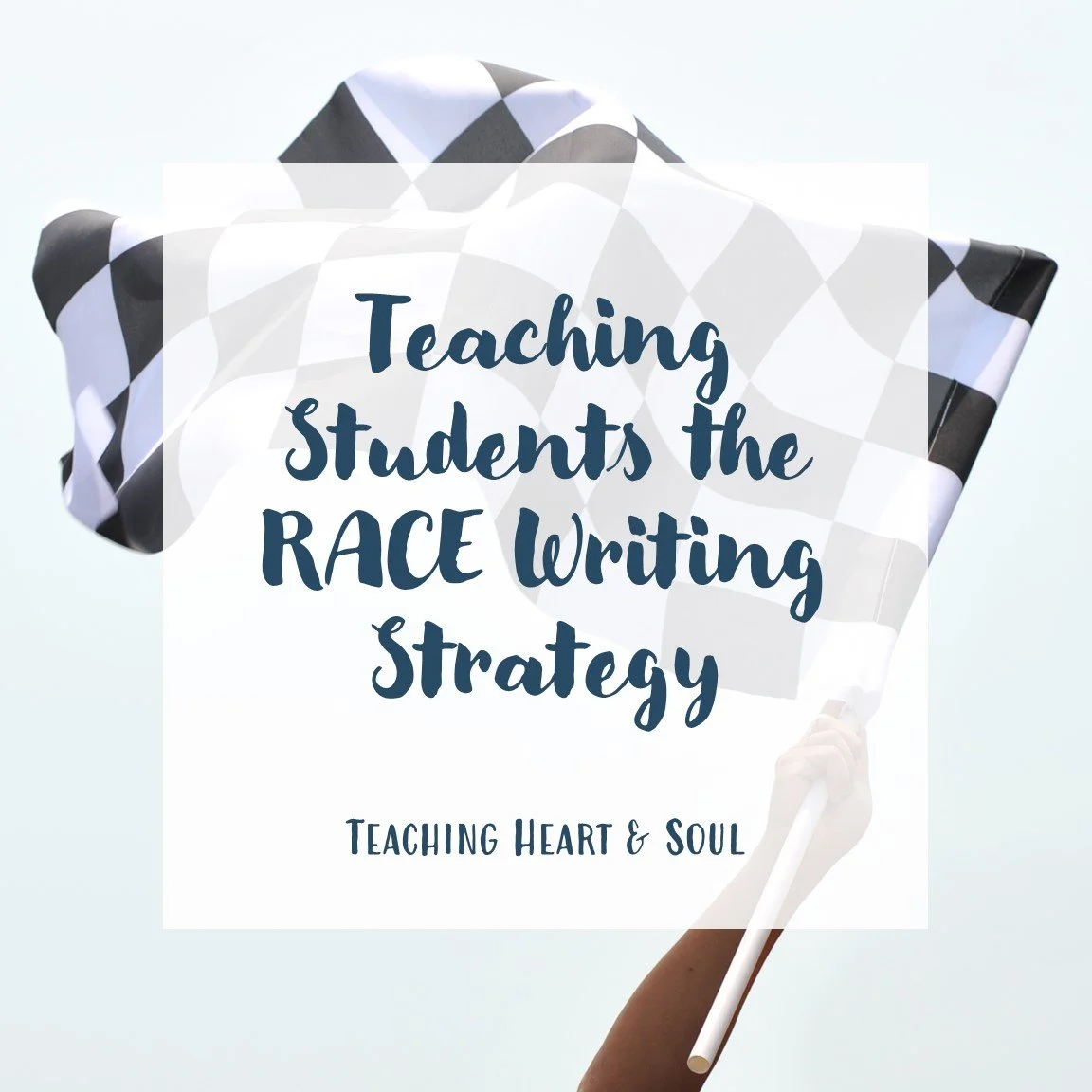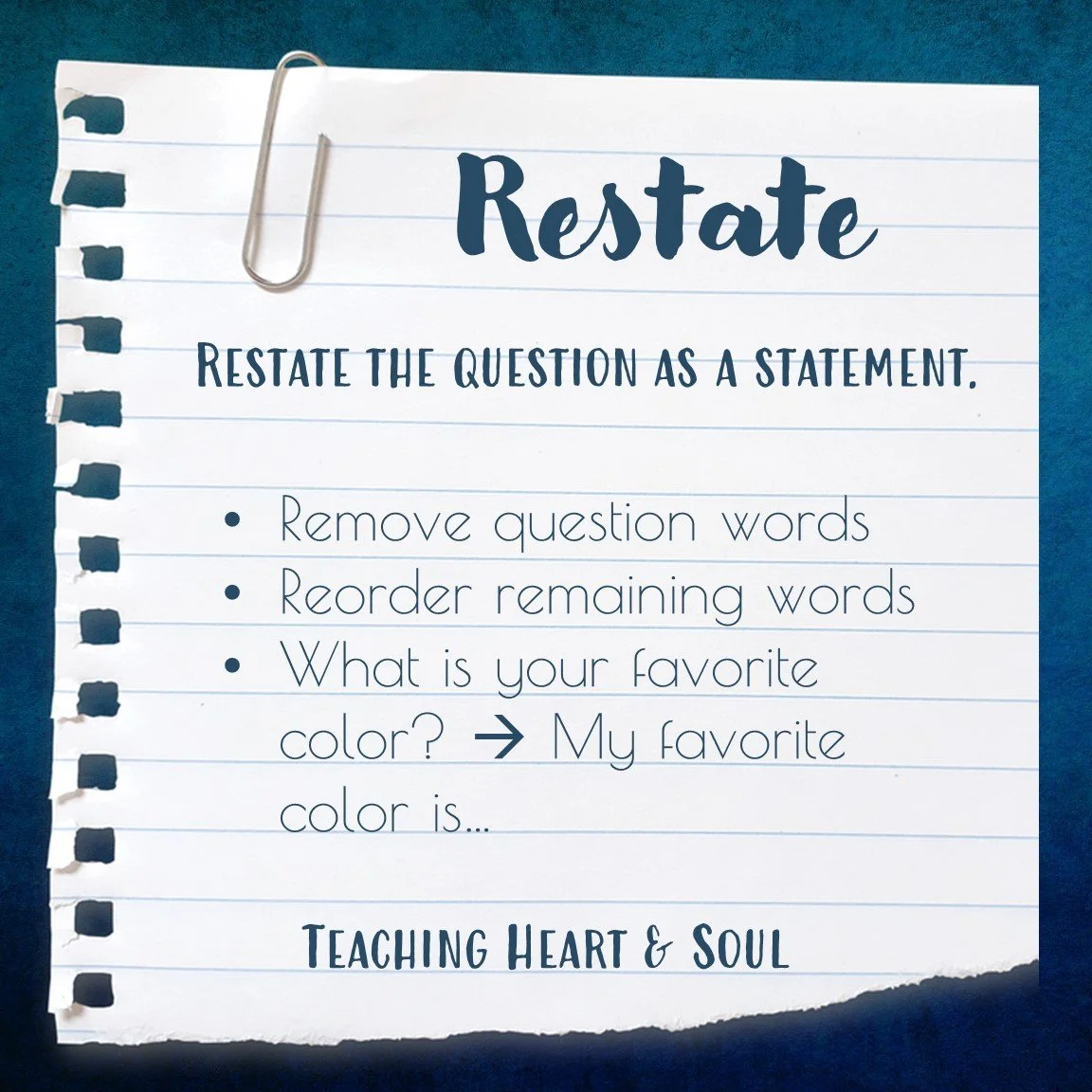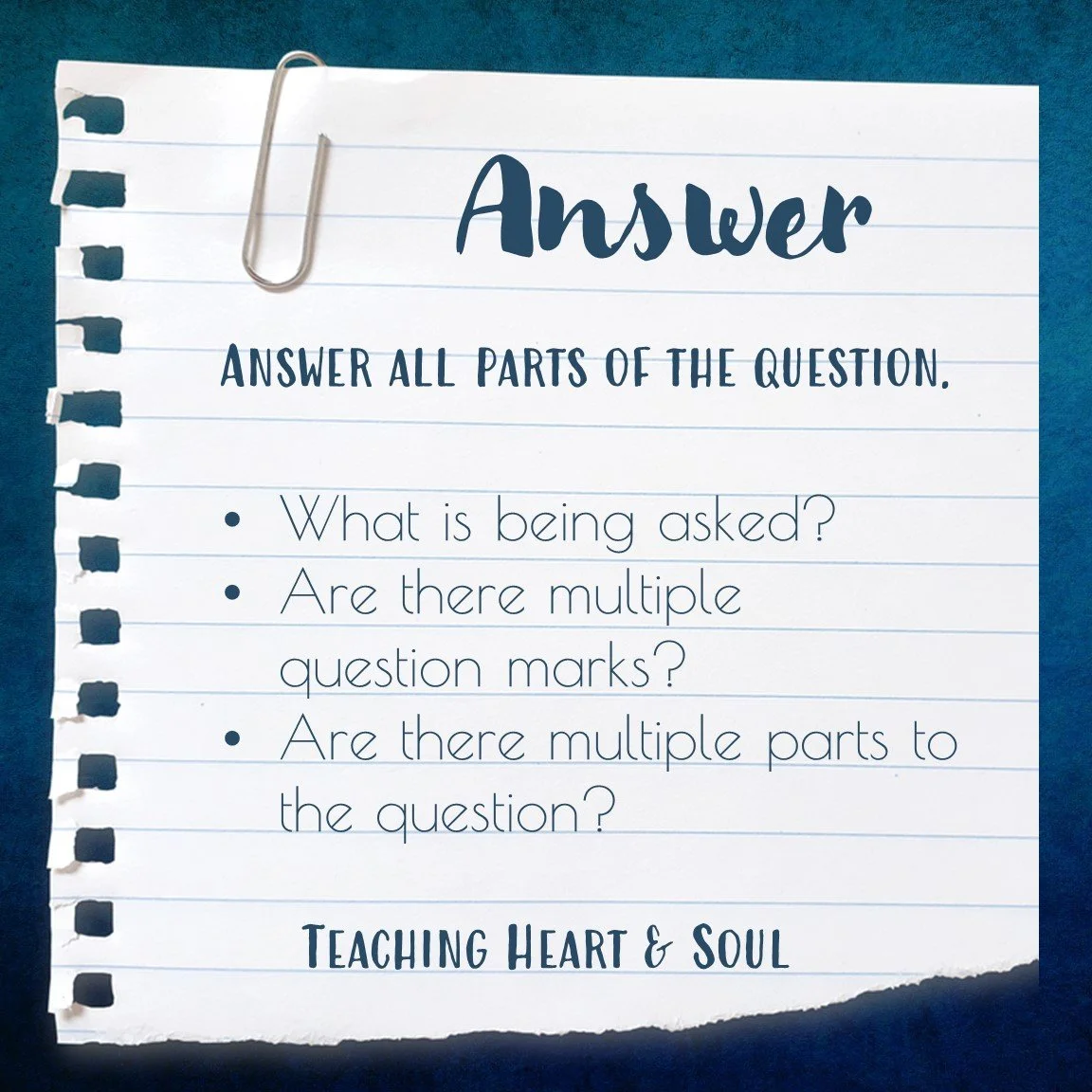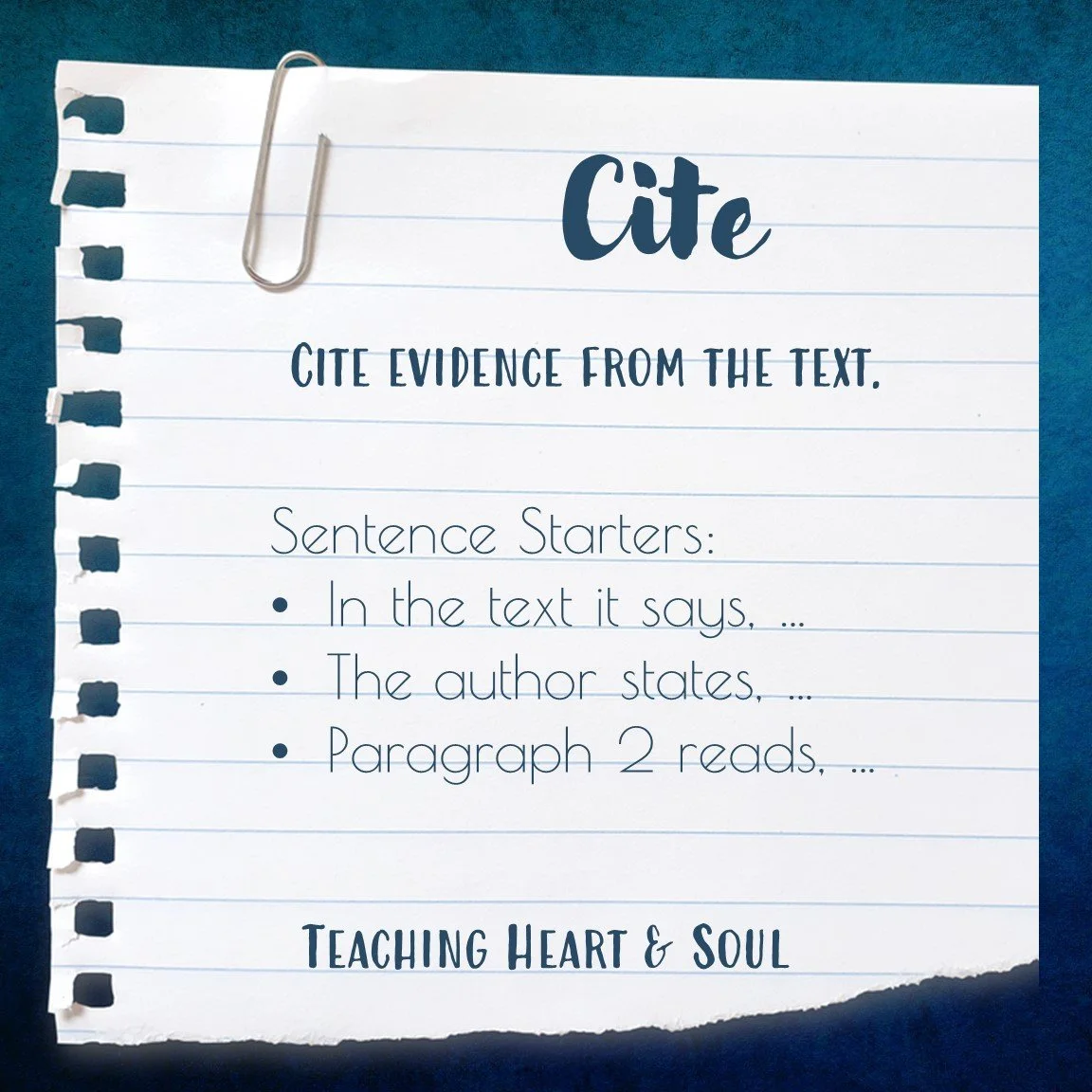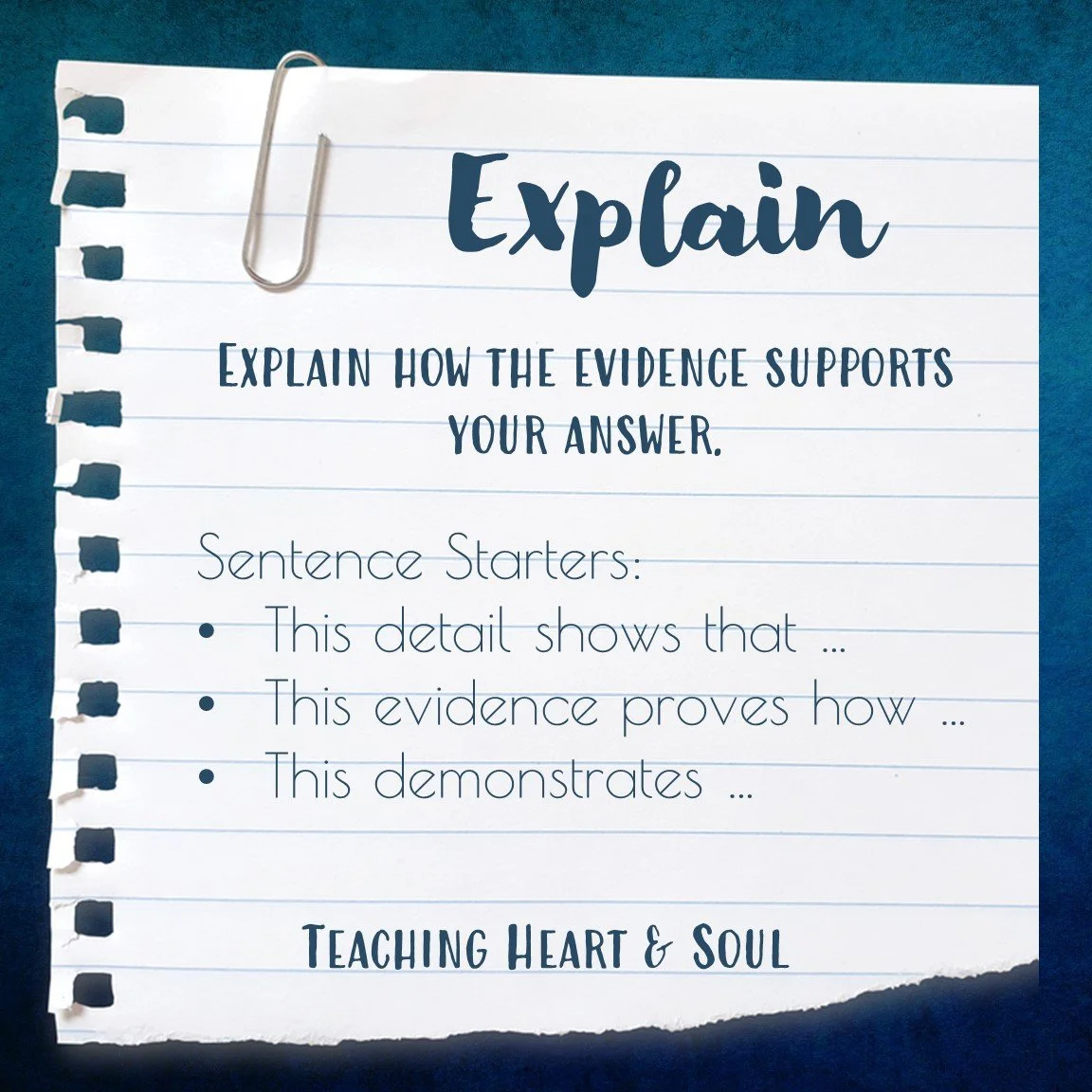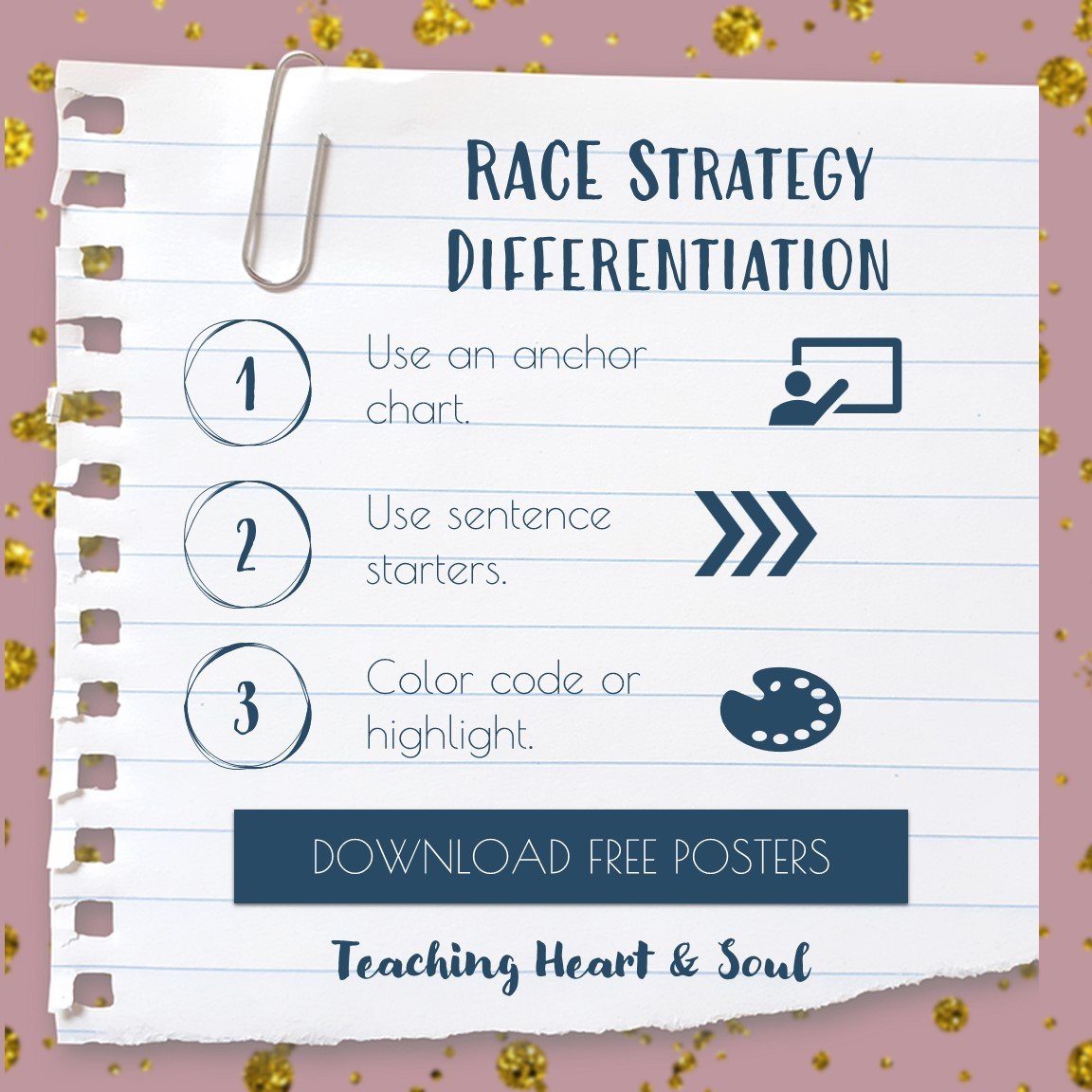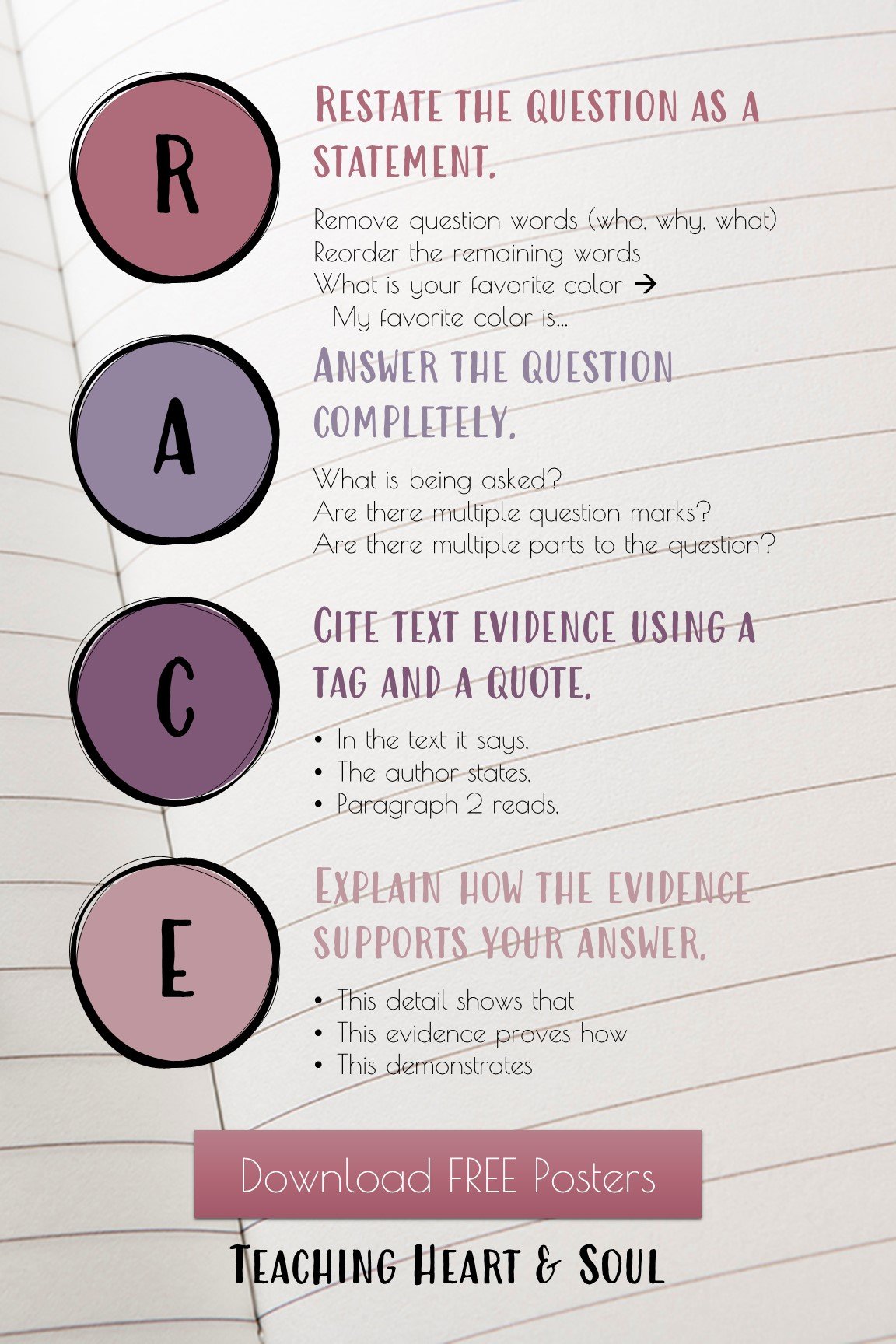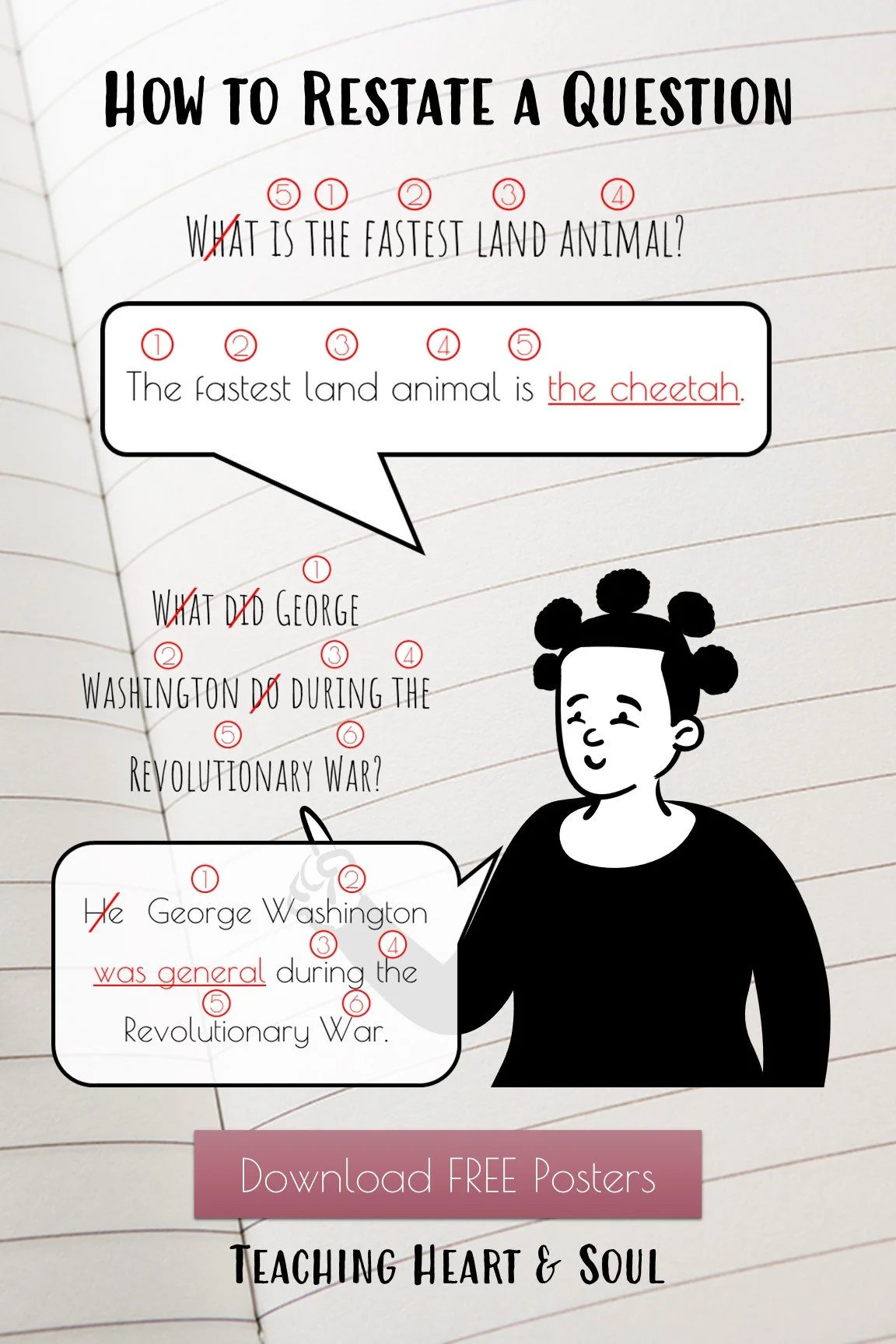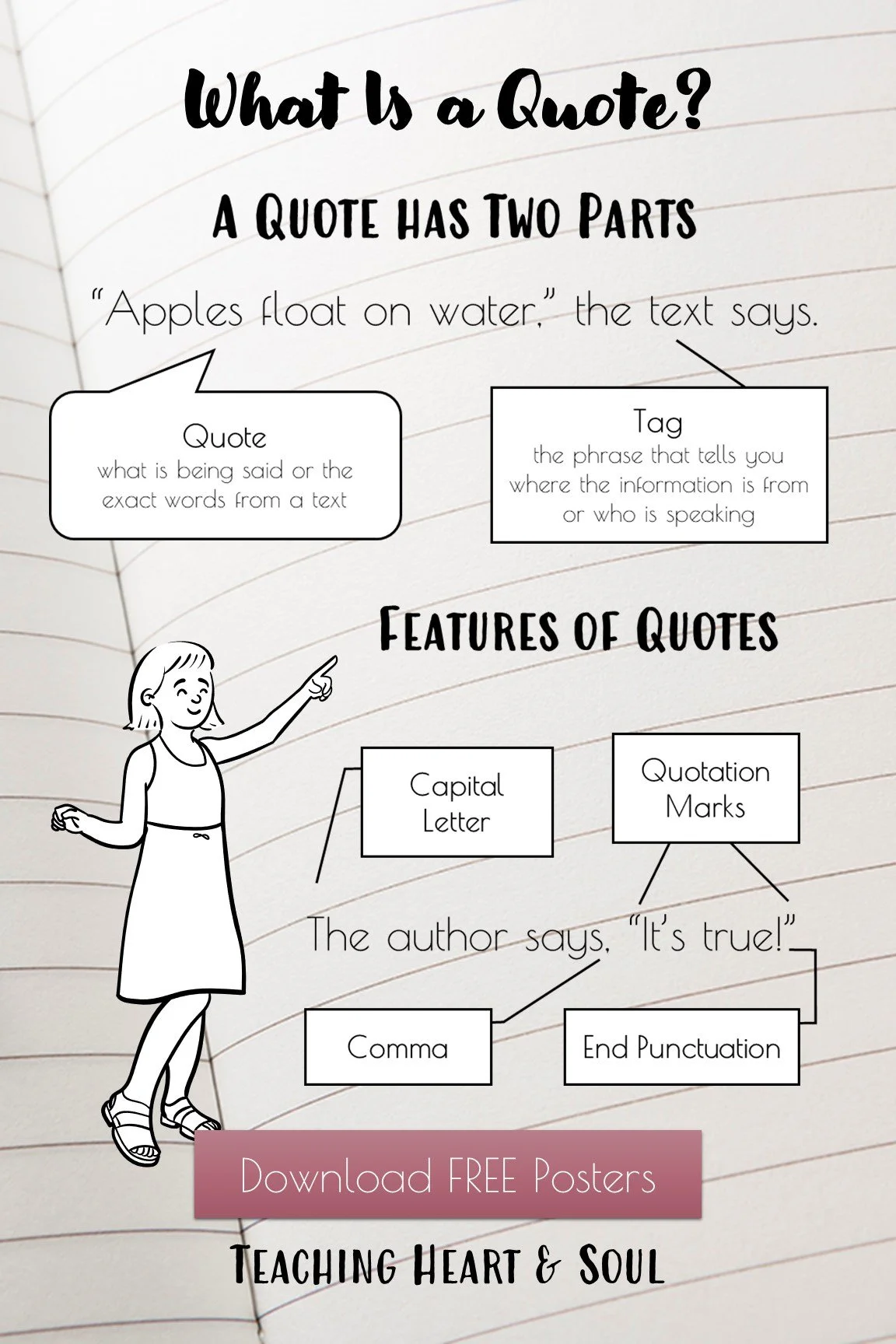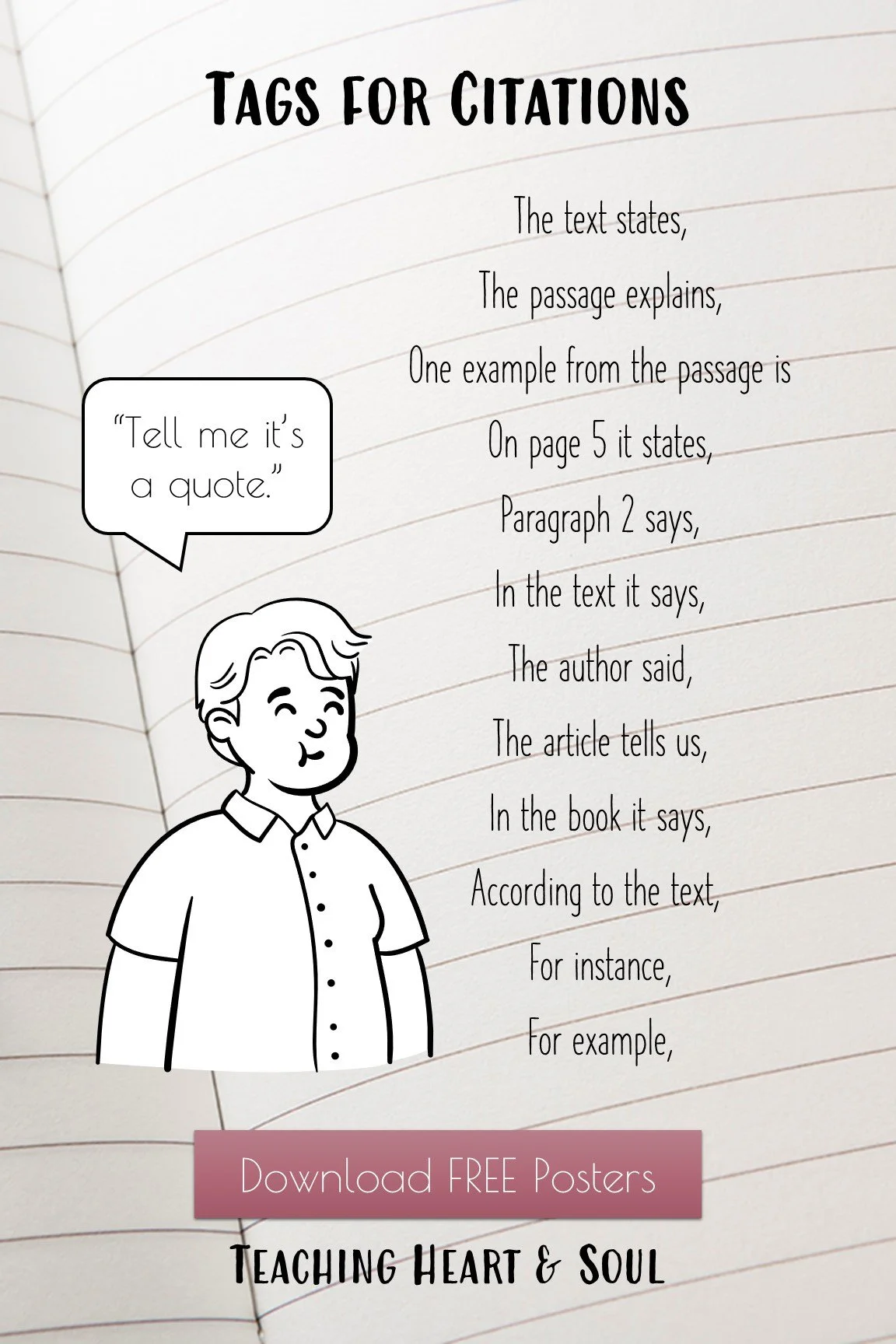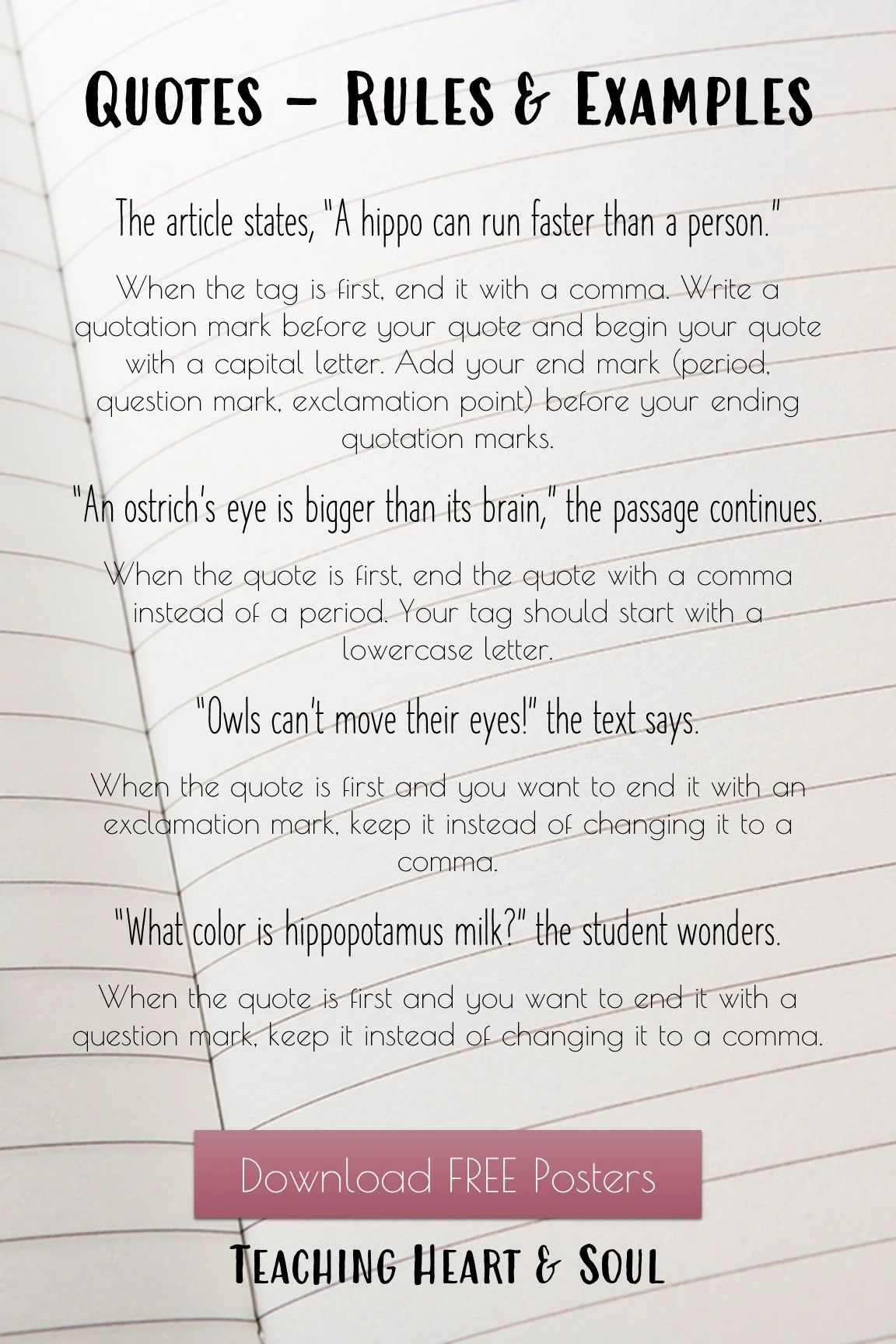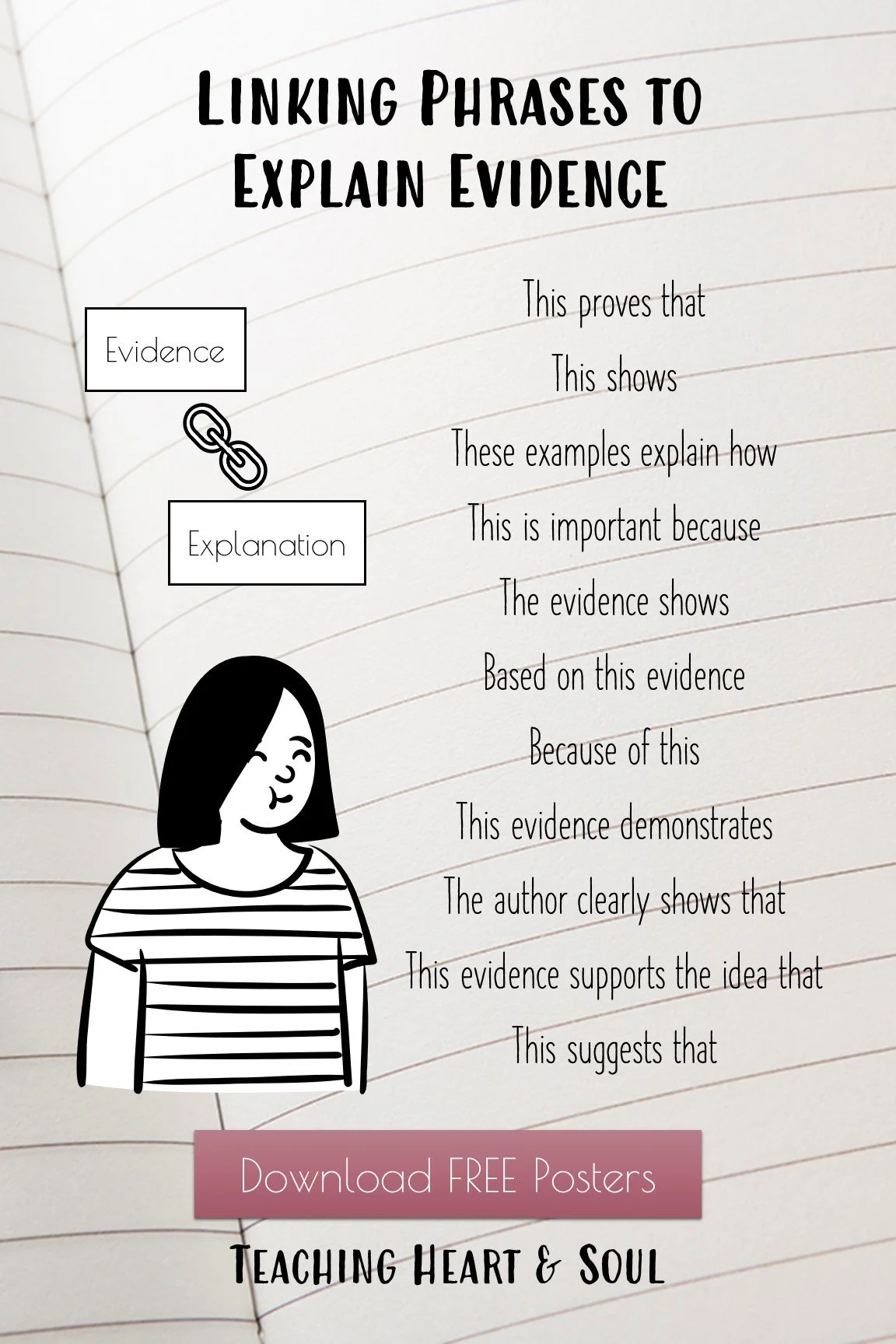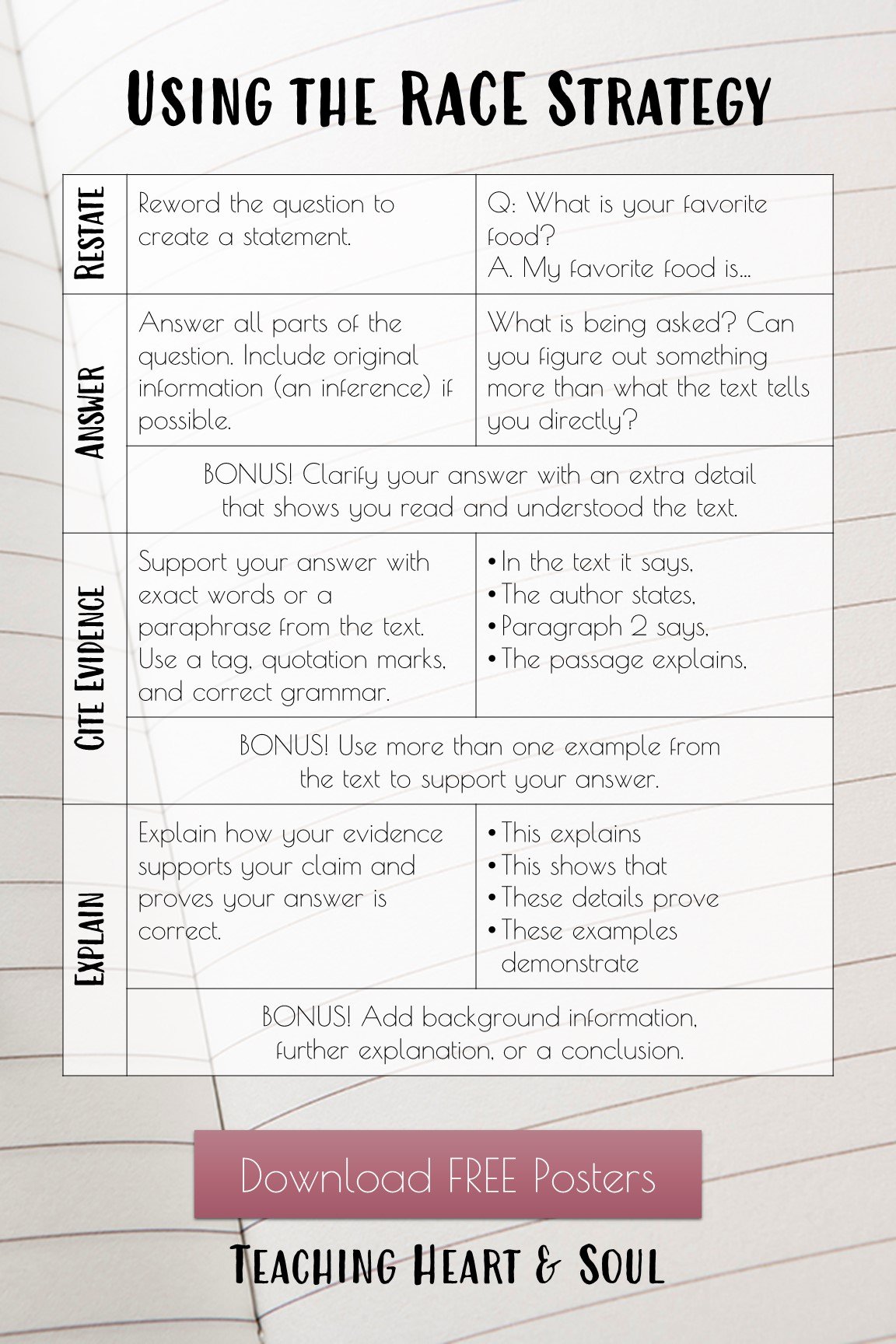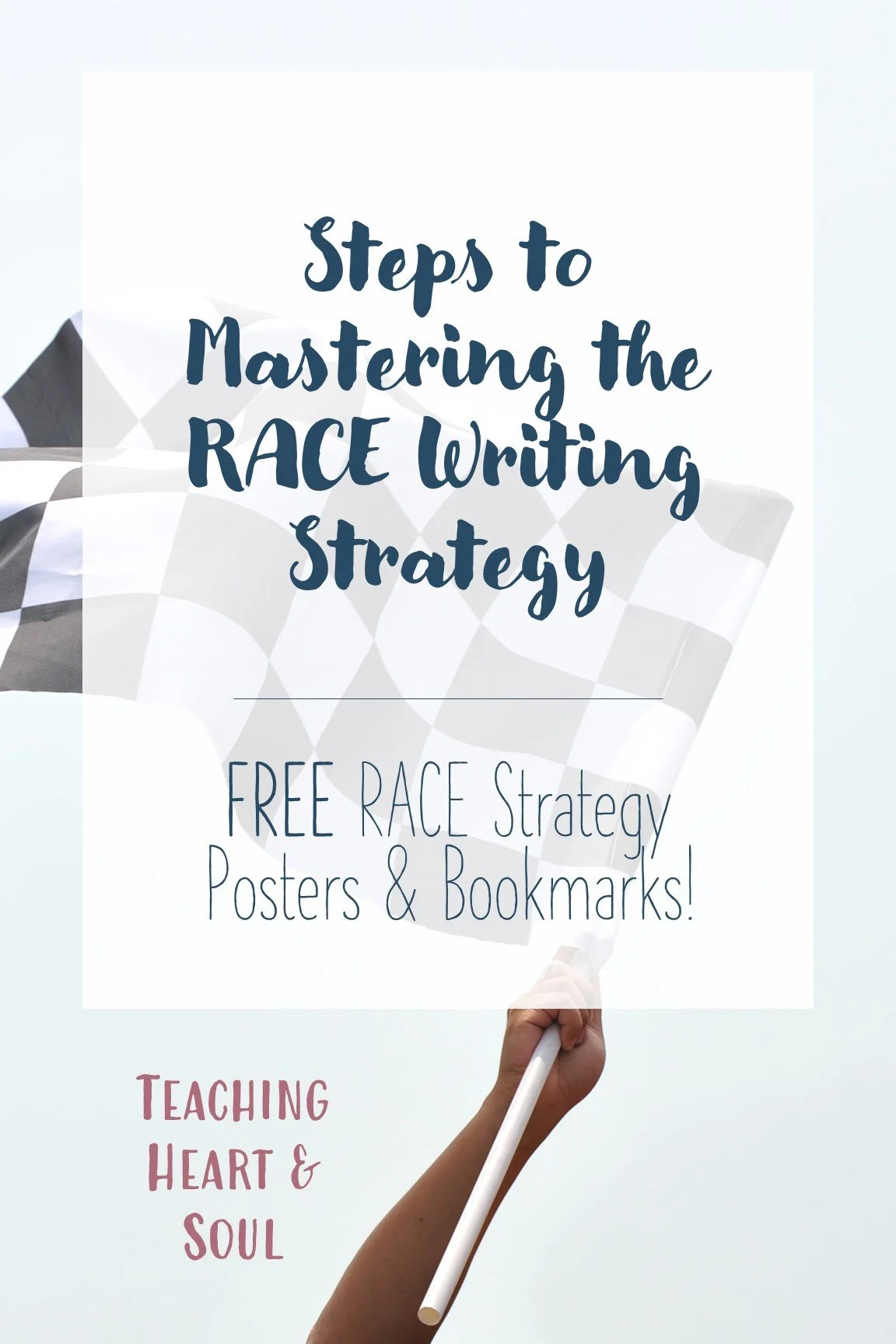Teaching Students the RACE Writing Strategy
I have taught writing with and without using the RACE strategy, and I can't begin to tell you how much it made a difference for my students. Using this strategy creates a template for writing that helps guide students and keep them organized. It's a great introduction to citations and body paragraphs for essays too!
When Can You Use the RACE Strategy?
If you introduce the RACE strategy at the beginning of the school year, you can use the strategy all year long for almost all subject areas! The key is to create constructed response questions so that students can craft written responses.
These response questions require a short answer or paragraph. They're usually designed with the RACE strategy in mind.
To create a constructed response question, make sure the question is clear, so that it can be clearly restated. Then, ensure that the question refers to a text so that students can cite evidence.
Furthermore, consider making the question claim- or inference-based, especially for older students or later in the school year. This allows students to practice their reasoning skills and individuality while responding to questions that require them to voice their own ideas.
How to Teach Students to Write Constructed Responses with the RACE Acronym
RACE stands for Restate, Answer, Cite, Explain. Many teachers prefer to use the RACES strategy, where the added "S" stands for summarize.
I Do, We Do, You Do
To teach students to write constructed responses with the RACE acronym, you can use the I Do, We Do, You Do method to directly teach this skill, practice together, and then have students complete their response writing on their own.
Teaching the RACE strategy using a step by step guide can be very helpful for students as they see the steps and can organize the skill in their minds.
First, show students how to restate the question. Next, teach them how to answer all parts of the question completely in their own words. Then, teach students how to cite text evidence. After that, show students what is expected when they explain the evidence from the text. Finally, make sure students can do all 4 steps together.
I'll explain how to do this below.
At each stage, make sure there is direct instruction, time to practice as a whole group, and then individual expectations.
Examples
Another important aspect of teaching the RACE strategy is to provide examples of what a RACE response looks like. Showing students a good example helps them understand what to work toward and what to include in their own writing.
Anchor Charts
As you teach the RACE strategy, write down the most important parts of the skill on an anchor chart. An anchor chart can be written on anchor chart paper or your whiteboard and allow students refer back to what you taught them.
On your anchor chart, include a brief description of each step of the RACE strategy. You should also include any sentence starters you would like your students to use.
Consider including the information below:
R - Restate (Restate the question as a statement.)
Remove question words (who, why, what)
Reorder the remaining words
What is your favorite color? --> My favorite color is...
A - Answer (Answer all parts of the question in your own words.)
What is being asked?
Are there multiple question marks?
Are there multiple parts to the question?
C - Cite (Cite evidence from the text using a tag and a quote.)
In the text it says,
The author states,
Paragraph 2 reads,
E - Explain (Explain how the evidence supports your answer.)
This detail shows that
This evidence proves how
This demonstrates
Click here for FREE RACE Strategy Posters for your classroom!
Use Different Types of Reading Materials
Students can use the RACE response strategy with many different subject areas, and they should also use this strategy with a variety of reading materials.
At first, it might be best to have students use the RACE strategy in response to short passages that are designed to practice constructed responses.
My favorite way to teach the RACE strategy is to take a few weeks at the beginning of the school year to learn and practice it using these short passages. Then, I will transition from teaching the skill to having students use it in response to reading comprehension questions and even science and history prompts.
The RACE writing strategy is great to use when dissecting a novel or an informational text in science class.
Make sure students have opportunities to practice this response strategy with nonfiction and fiction passages as well as longer texts (novels, articles) and shorter texts (short passages, poems).
Teach Important Words and Terms
For students to be able to use the RACE strategy well, it is important that they understand the key vocabulary.
Make sure students understand the terms below. Students will hear and use these terms as they learn and use the RACE strategy, so it's important that they understand them.
RACE - Restate, Answer, Cite, Explain
Constructed Response Question - A question requiring the RACE strategy for the answer
Restate - Reuse words from the question in your answer statement
Cite - Quote or write the exact words from a text
Evidence - A quote from the text that supports the answer
Explain - Connect the evidence to the answer and show how the answer is supported by the text
Summarize - Give a brief review of the main points
Sentence Starters/Sentence Stems - Common phrases used to start certain types of sentences, such as citation tags or the beginning to an explanation sentence
Tag/Signal Phrase - The words before or after a quote that show where or who the information is from
Quote - The exact words from a text
Text - The passage, article, story, or poem students are referencing
Click here for FREE RACE Strategy Posters for your classroom!
R - Restate the Question
The first step of the RACE strategy is to restate the question. This involves removing the question words and taking the remaining words from the question and rearranging them to create a statement or answer.
For example, if the question is "What is your favorite color?" you would remove the question word "what" and rearrange the remaining words from the question to create the beginning of your answer, "My favorite color is..."
Sometimes a question will be harder to restate and require students to move the words around a little more.
For example, for the question "What was George Washington doing during the Revolutionary War?" you would get rid of the words "what" and "doing" and place your answer in the middle of the restated question. Your answer might then be "George Washington was [doing this] during the Revolutionary War."
A - Answer the Question Completely
The next step to the RACE strategy is to finish your response by answering the question completely in your own words, usually in one sentence.
Make sure students use complete sentences when they answer questions.
Before continuing on to the rest of the constructed response, make sure students can restate questions in a complete sentence. Practice this skill before moving onto the next steps.
If you need help with this, I have a few resources you can use in your classroom:
Restate the Questions - Worksheets & Flashcards
Restate the Question with Aesop's Fables
Restate the Question - American Revolution Themed
C - Cite Textual Evidence
Citing text evidence is the next step in a constructed response.
Students will need a strong understanding of how to use quotation marks to do this well. If they don't know how to use quotation marks, teach that skill first.
As students cite evidence, you want to make sure they are using relevant evidence. The purpose of this step is to make sure the evidence proves their answer. Students must make sure their text evidence not only relates to their answer, but proves that their answer or claim is accurate.
Part of this step involves finding textual evidence in addition to writing it down correctly. It helps to do this with shorter passages where the length of text is not as intimidating.
To help students cite the text or practice using quotation marks, consider using one of these resources:
Cite the Text Worksheets [FREE]
Cite the Text - American Revolution Themed
If you want more information about how to teach your students to cite the text, click here.
E - Explain the Evidence
The last step of response writing is to explain the evidence. As noted above, text evidence should prove that the student's answer is correct. However, the explanation sentence is what shows that connection and demonstrates that proof.
Some students may have a tendency to restate their answer during their explanation sentence. That's a great first step, so don't be too hard on your students if this is where they're at. However, an excellent explain sentence should provide more insight.
Note the differences of the responses below that answer the question, "How does Isabella show interest in her grandfather’s adventures?"
Developing
Isabella shows interest in her grandfather’s adventures by asking him if she can come along with him. In the text it says, “One day, Isabella decided that she too wanted to explore new lands and discover new animals. She begged her grandfather to take her on his next adventure, and after much pleading, he finally agreed.” This proves that Isabella showed interest in her grandfather's adventures because she asked to go with him.
Notice how this explanation sentence simply restates the first sentence.
Advanced
Isabella shows interest in her grandfather’s adventures by asking him if she can come along with him. In the text it says, “One day, Isabella decided that she too wanted to explore new lands and discover new animals. She begged her grandfather to take her on his next adventure, and after much pleading, he finally agreed.” This shows that Isabella cared about what her grandfather was doing on his explorations enough to want to take an active role in his interests.
This is a much better response because it uses synonyms (interest vs. cared) and expands on the original answer.
If you're ready to teach your students to use this response strategy, check out one of these resources:
Learn the RACE Strategy with Aesop's Fables (Great for younger students!)
RACE Strategy Practice - American Revolution Themed (Good choice for 4th & 5th!)
S - Summarize Your Answer
The RACE strategy doesn't usually include a summary sentence. However you can change the acronym to "RACES" and add this sentence if it makes sense for your classroom. For younger students, I would concentrate on the first 4 steps, but if you have an advanced class or middle school students, the RACES strategy might be a better fit.
Take the first 4 steps (restate, answer, cite, explain) and add one more sentence as a quick summary before moving on. If you're using the RACE strategy to write body paragraphs, this summary sentence works great as a conclusion sentence.
For the example above, a summary sentence might sound like this:
"Isabella's enthusiasm to accompany her grandfather on his explorations shows her strong interest and curiosity in his adventures."
Differentiate for Students and Their Individual Needs
Struggling writers may benefit from a variety of differentiation strategies.
Anchor Chart
The first thing you can do for struggling students is to provide anchor charts. An anchor chart gives an outline of the steps needed to use the RACE strategy and is usually posted on the wall of the classroom for everyone to see. Having this available can help students stay on track as they work through the 4 steps of the RACE strategy to craft their written response.
An anchor chart can also be turned into a reference page or cheat sheet for the student to use on his or her own.
Sentence Starters
When students struggle, you can also give them sentence starters or provide sentence stems for them to use to make the writing process easier until they gain confidence.
In particular, you can give students possible sentence stems for the tags when citing evidence as well as the explanation sentences. If needed, you can support your students with restating as well and turn that into a sentence starter.
As students use these sentence stems, make sure they double check that their writing makes sense, rather than plugging in sentence starters and hoping for the best!
While it can be helpful to provide sentence stems to students, they should build their skills until they don't need this support.
Color Code
Having students color code is another great way to provide differentiation. Color coding involves having students highlight their response in 4 different colors to make sure they have each part of the RACE strategy.
For example, students could highlight where they restated the question in orange, highlight their answer in yellow, highlight their citation in green, and highlight their explain sentence in blue.
Doing this helps students keep track of the steps and ensures that they have all 4 parts included in their answer.
Small Groups
Another great way to provide additional support to struggling writers is to work in a small group with them. You may already have small group time built into your schedule to do this.
These small groups should include additional instruction and immediate feedback during practice.
Try a few of the passages linked above to give your students extra opportunities to practice.
Use in Essay Writing
Using the RACE strategy for writing doesn't end with constructed response questions. Students can also use the RACE strategy in the body paragraphs of their essays too!
I have found that doing this streamlines the writing process for students.
Instead of learning one strategy for paragraph writing and another for essay-writing, students can use what they already know about the RACE strategy and apply the key components to their essays.
Students can restate and answer a question to write the topic sentence of a body paragraph.
Citing text evidence becomes the detail sentences and are similar to what students would already do for a research essay.
Students can end with an explain sentence or use the RACES strategy for writing and include a summary sentence as well.
Using this method may replace your other writing strategies or it may compliment it nicely.
Conclusion
If you've never used the RACE strategy when teaching students to write constructed responses or paragraphs, I encourage you to try it out! I've found that it's a great way to scaffold students' writing skills because it creates a framework for students to follow, provides sentence stems, supports each step of the paragraph-writing process, and can be used for essay writing as well.
If you want help teaching the RACE strategy, check out my resources to make it easier for yourself. Let me do the prep work so that you can get back to the heart and soul of teaching.
Download FREE RACE Strategy Posters
See All RACE Strategy Resources
Read more about Citing Text Evidence
